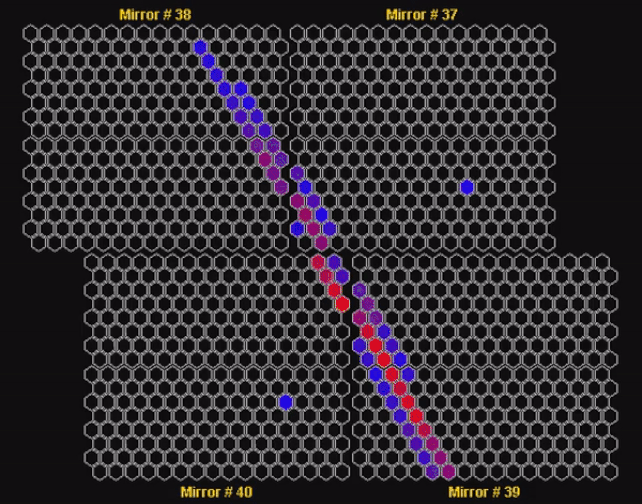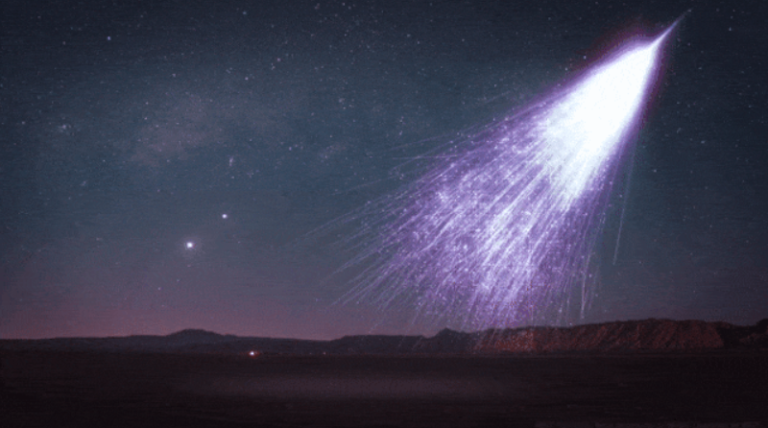A Mystery: Earth Hit by an Exceptionally Strong Cosmic Ray, Origin Unknown
Astrophysicists are left astounded by a cosmic ray that collided with Earth’s atmosphere. This minuscule particle carried an astonishing energy level exceeding 240 exa-electron volts, or 2.4 x 10^20 electron volts – second only to the renowned Oh-My-God particle identified in 1991, boasting 320 exa-electron volts. However, mirroring the enigma surrounding the Oh-My-God particle, scientists were unable to trace the origin of this new particle to an apparent source.
Physicist John Matthews from the University of Utah, a member of the Telescope Array collaboration responsible for the discovery, remarks, “The particles are so high energy, they shouldn’t be affected by galactic and extra-galactic magnetic fields. You should be able to point to where they come from in the sky. But in the case of the Oh-My-God particle and this new particle, you trace its trajectory to its source and there’s nothing high energy enough to have produced it. That’s the mystery of this – what the heck is going on?”

Cosmic rays present a perplexing celestial puzzle. Despite detecting them for over a century, we still lack a comprehensive understanding of the various mechanisms governing their propagation throughout the universe. Unlike light radiation, cosmic rays consist of particles, primarily atomic nuclei but also sub-nuclear particles like protons and electrons. Remarkably, these particles traverse the cosmos at nearly the speed of light, exhibiting more energy than expected.
Scientists posit that these cosmic rays originate in energetic phenomena such as supernovas and stellar collisions. While less energetic sources like stars, including our Sun, generate lower-energy cosmic rays, identifying the sources of the more potent ones proves challenging.
Our fortunate atmospheric shield shields us from cosmic rays, yet we possess effective means of detecting them. When a cosmic ray collides with atmospheric particles, it generates a cascade of particles that descends to Earth. Observatories can capture and link these particles to the originating cosmic ray collision.
Nevertheless, showers resulting from high-energy cosmic rays cover a sizable expanse, necessitating extensive ground coverage for accurate reconstruction of the particle event. The international collaboration-managed Telescope Array boasts an impressive detection area of 700 square kilometers (270 square miles).

On May 27, 2021, the array detected a signal. Following extensive calculations, analysis, and thorough verification, the Telescope Array collaboration determined that they had identified a particle on the energy scale comparable to the Oh-My-God particle. “When I initially came across this ultra-high-energy cosmic ray,” stated physicist Toshihiro Fujii of Osaka Metropolitan University, who led the research, “I thought there must have been a mistake, as it showed an energy level unprecedented in the last three decades.”
The discovery, utilizing a different technique from the one that unveiled the Oh-My-God particle and occurring in a distinct part of the sky, suggests that, although infrequent, these observations genuinely represent astrophysical occurrences. The Oh-My-God detection was not a fluke or an error.
The research team christened the newfound particle “Amaterasu,” named after the formidable Shinto goddess of the Sun, with researchers speculating that both are likely protons.
However, the confirmation of ultra-high-energy cosmic rays presents a dilemma. Ultra-high-energy particles exhibit a distinctive cut-off, denoted as the Greisen-Zatsepin-Kuzmin limit, set at 5 x 10^19 electron volts. This is believed to be the maximum energy a particle can sustain over extensive distances of around 160 million light-years, as cosmic rays lose energy during their journey through space.

Within that distance from us, there are celestial entities capable of generating cosmic rays, but nothing even remotely potent enough to produce particles akin to Oh-My-God or Amaterasu has been identified within 160 million light-years of the Solar System. “Events that are conventionally perceived as energetic, such as supernovae, lack the required intensity for this,” notes Matthews. “You need immense amounts of energy and exceptionally high magnetic fields to confine the particle during its acceleration.”
Tracing the presumed path Amaterasu took through space leads to a cosmic void—a region between the filaments where galaxies typically cluster, with relatively sparse matter. This implies that there is some missing piece in our understanding.
Possibly, magnetic fields possess greater particle acceleration capabilities than previously thought. It’s conceivable that there is an unseen nearby source. Alternatively, the particles may be guiding us toward an unprecedented astrophysical phenomenon. “It could be defects in the structure of spacetime, colliding cosmic strings,” suggests physicist John Belz of the University of Utah. “I mean, I’m just proposing unconventional ideas that people are contemplating because there’s no standard explanation. It’s a genuine mystery.”
The research has been published in Science.
This article is republished from ScienceAlert under a Creative Commons license. Read the original article.
Do not forget to share your opinion with us to provide you with the best posts !





0 Comments